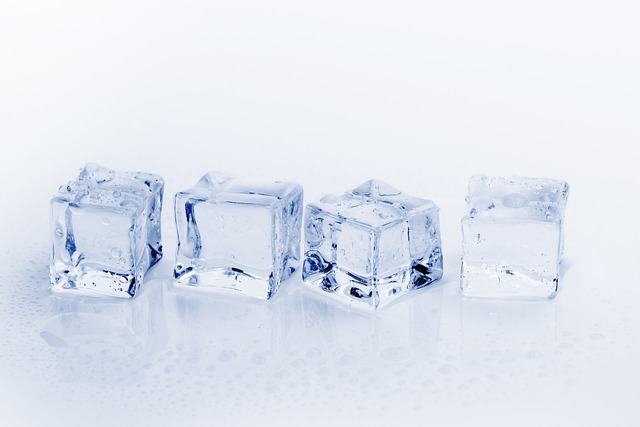Cold plunging, or immersing oneself in cold water after exercise, is a highly effective recovery method for athletes. This practice reduces inflammation, muscle soreness, and delayed onset muscle stiffness while enhancing metabolism and circulation. Regular cold water therapy can speed up recovery times, improve athletic performance, and prevent injuries by strengthening blood vessels and tissues. Athletes are advised to start with short durations (10-15 minutes) and gradually increase immersion time as their bodies adapt.
Looking to supercharge your athletic recovery? Discover the power of cold plunges, a game-changing practice gaining traction among athletes. This article demystifies cold water therapy, exploring its scientific basis and remarkable benefits for muscle recovery after intense workouts. We’ll guide you through incorporating ice baths or post-workout cold water immersions into your routine, offering tips for optimal results. Plus, learn how this proactive approach can help prevent injuries and enhance athletic performance.
Understanding Cold Plunges and Their Scientific Basis
Cold plunges, also known as ice baths or cold water therapy, have gained popularity among athletes looking to enhance their recovery processes and overall performance. This practice involves immersing oneself in cold water, typically around 50-59°F (10-15°C), for a brief period after intense physical activity. The scientific basis behind this method lies in the body’s response to such extreme temperature changes. When you expose your body to cold water post-workout, it triggers vasoconstriction (a narrowing of blood vessels) which reduces blood flow to the extremities and core. This process helps minimize inflammation and muscle damage, two key factors that contribute to delayed onset muscle soreness (DOMS).
The benefits of cold plunges for athletic recovery are numerous. They can reduce muscle stiffness and pain, speed up metabolism, and improve circulation once the body re-warms. For athletes, this therapy is particularly useful as it may enhance performance by promoting a faster recovery between intense training sessions. Moreover, regular cold water immersions have been linked to better injury prevention, as they help strengthen blood vessels and reduce the risk of muscle strains and tears. This simple yet powerful tool offers an accessible way for beginners to incorporate a science-backed practice into their post-workout routines, potentially transforming their athletic recovery journey.
Benefits of Cold Water Therapy for Athletes' Recovery
Cold water therapy, such as cold plunges or ice baths, has gained popularity among athletes looking to enhance their recovery process. This ancient practice offers numerous benefits for athletic performance and overall well-being. One of its key advantages is its ability to reduce muscle soreness and inflammation post-workout. Cold immersion helps constrict blood vessels, which can alleviate swelling and pain, allowing athletes to recover faster and return to training or competition sooner.
Additionally, cold therapy for athletes has been linked to improved circulation upon rewarming the body. This process promotes oxygen and nutrient delivery to sore muscles, aiding in repair and growth. Several studies suggest that regular exposure to cold water can contribute to injury prevention by strengthening muscular and connective tissues, making it an excellent addition to any athlete’s recovery routine.
Incorporating Cold Plunges into Your Post-Workout Routine
Incorporating cold plunges into your post-workout routine can be a game-changer for athletic recovery. Cold water therapy, such as ice baths or cold water immersions, has been shown to reduce muscle soreness and inflammation, key factors in promoting faster healing and improved performance. When your body is exposed to cold after intense exercise, it triggers a series of physiological responses that enhance blood flow to sore muscles, bringing much-needed oxygen and nutrients for repair. This process also helps flush out metabolic waste products that can contribute to post-workout discomfort.
For beginners, starting with shorter durations—around 10-15 minutes—in a cold plunge is recommended. You can gradually increase the time as your body adapts. It’s important to maintain proper safety precautions, ensuring the water temperature doesn’t drop below 50°F (10°C) to prevent hypothermia. Incorporating this simple yet powerful technique into your routine could be the secret weapon for optimising athletic performance and preventing injuries.
Cold Therapy as a Proactive Approach to Injury Prevention
Cold therapy, particularly through methods like cold plunges or ice baths, is emerging as a powerful proactive approach to injury prevention and athletic recovery among athletes. By immersing oneself in cold water post-workout, muscles experience reduced inflammation and delayed onset muscle soreness (DOMS). This form of therapy has been shown to enhance blood flow, speeding up the removal of metabolic waste products that can cause pain and fatigue.
For beginners incorporating cold plunges into their recovery routines, it’s essential to start with shorter durations—around 10-15 minutes—and gradually increase immersion time as tolerance builds. The key benefits extend beyond muscle recovery; cold water therapy can also improve athletic performance by enhancing nerve impulse transmission and promoting faster muscle fiber repair, making it a valuable tool for any serious athlete looking to maintain peak performance and prevent injuries.
Cold plunges offer a powerful tool for athletic recovery, with scientific evidence supporting their benefits for muscle repair, inflammation reduction, and enhanced circulation. By incorporating short cold water immersions into post-workout routines, athletes can accelerate recovery times, improve performance, and proactively prevent injuries. Whether it’s a quick ice bath or a gradual cold therapy session, these techniques provide a refreshing and effective way to take care of your body both inside and out.
